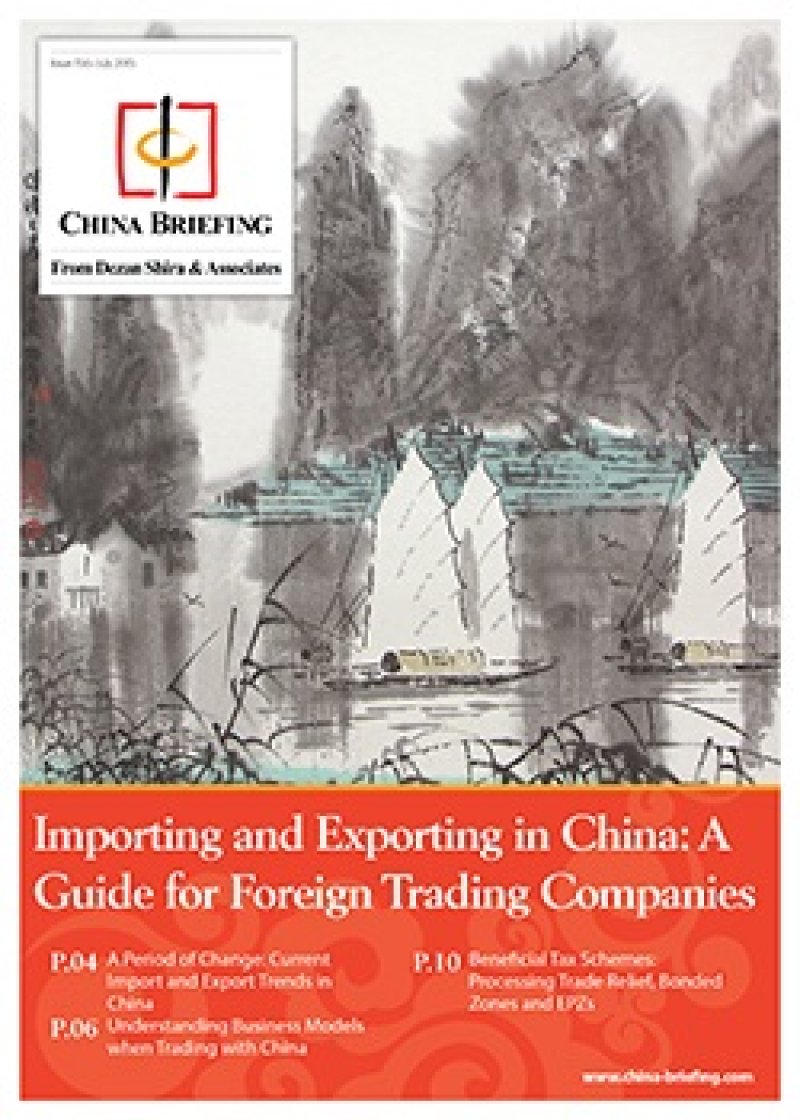China’s Cosmetics Industry: Opportunities and Challenges for Foreign Investment
 By Dezan Shira & Associates
By Dezan Shira & Associates
Editor: Jake Liddle
In recent years, China’s cosmetics industry has experienced dramatic growth. Expanding along with China’s economic upturn, the Middle Kingdom now has the world’s second largest cosmetics consumer market after the U.S.
Although the industry saw its lowest growth rate in 2014 since 2005 (12.3 percent), China’s market is still extremely lucrative. According to Euromonitor International’s Beauty and Personal Care in China Report, the growth of China’s average household income is a major factor in the changing trends of local consumers, and will be a driver for increasing demand not only in the country’s established first tier cities such as Shanghai and Beijing, but also in the lesser-known second and third tier cities.
Market Trends
The industry remains one of the most promising fields of business in China. With domestic brands only accounting for around 10 percent of the cosmetics market, there is a clear gap in the market for international companies.
Chinese consumers are becoming more particular when picking cosmetic products, not only in terms of quality, but also in terms of health and safety. Larger companies can rely on an established reputation for safety, and this perhaps gives foreign investors the edge over domestic brands.
Another dimension of Chinese consumers’ changing tastes has hailed from Japan: the rise of ‘cosmeceuticals’ (Okomp) – products combining cosmetic and pharmaceutical effects, namely acne treatment lotions and spot ointments. The cosmeceuticals market has been dominated by oversees brands such as Freeplus, Simple and Vichy, but have recently been joined by domestic brands such as Tongrentang and Herborist. These domestic companies rely heavily on the unique utilization of traditional Chinese medicines, emphasizing green and natural aspects of their ingredients.
According to the China Cosmetic Market Report 2014-2017, there is also a rising opportunity in the male cosmetics market, with men’s products accounting for 4.6 percent of retail sales in 2013 and forecast to increase further in the future. Importantly, it is growing at a faster rate than the female market.
E-Commerce Opportunities
70 percent of China’s cosmetic products are distributed by larger department stores and supermarkets; however, as purchasing habits change, specifically in younger demographics, consumers are moving towards purchasing cosmetic products online. This will mean a shift in marketing strategy and distribution within the cosmetics industry, with increasing emphasis on e-commerce. According to iResearch, the total value of China’s online cosmetics market was RMB 8.35 billion (US$1.35 billion) in April 2014, with C2C platforms accounting for 63 percent (US$856.1 million) and B2C platform accounting for 37 percent (US$502.9 million).
![]() RELATED: Selling to China without a Physical Presence
RELATED: Selling to China without a Physical Presence
Challenges for Foreign Companies
Until 2014, China’s top cosmetics retail tables were dominated by established multinational brands, accounting for over 60 percent of the market share. Their success can be owed to their extensive product ranges, established reputation and quality, and dominance in the premium and medium cosmetic markets. But increasingly, Chinese domestic companies such as Shanghai Jahwa, Proya and Marubi, which dominate the lower end of the market, are proving capable of competing with the big international names in China’s cosmetics market.
Larger western multinational companies such as Unilever, L’Oreal and Procter & Gamble are not faring as well as they were in previous years. Conscious that western brands do not necessarily cater to their tastes or needs, Chinese consumers have turned to popular Korean brands more suited to Asian complexions. It is no surprise that from 2013-2014, the best performing imports in China’s cosmetics market were Korean and not western brands.
Forecast for the Future
For foreign investors, China’s cosmetics industry represents a substantial opportunity, characterized by a strong competitive market that is not only comprised of foreign multinational companies, but also emerging domestic and other Asian companies. The expansion of men’s cosmetics, combined with rapid changes in consumers’ spending habits and retail platforms, marks another key prospect for investment. With a current annual growth rate of approximately 12 percent and forecast value growth set to remain profitable, the industry is undoubtedly an optimistic point of investment in China.
|
Asia Briefing Ltd. is a subsidiary of Dezan Shira & Associates. Dezan Shira is a specialist foreign direct investment practice, providing corporate establishment, business advisory, tax advisory and compliance, accounting, payroll, due diligence and financial review services to multinationals investing in China, Hong Kong, India, Vietnam, Singapore and the rest of ASEAN. For further information, please email china@dezshira.com or visit www.dezshira.com. Stay up to date with the latest business and investment trends in Asia by subscribing to our complimentary update service featuring news, commentary and regulatory insight. |
![]()
Importing and Exporting in China: a Guide for Trading Companies
In this issue of China Briefing, we discuss the latest import and export trends in China, and analyze the ways in which a foreign company in China can properly prepare for the import/export process. With import taxes and duties adding a significant cost burden, we explain how this system works in China, and highlight some of the tax incentives that the Chinese government has put in place to help stimulate trade.
 Adapting Your China WFOE to Service China’s Consumers
Adapting Your China WFOE to Service China’s Consumers
In this issue of China Briefing Magazine, we look at the challenges posed to manufacturers amidst China’s rising labor costs and stricter environmental regulations. Manufacturing WFOEs in China should adapt by expanding their business scope to include distribution and determine suitable supply chain solutions. In this regard, we will take a look at the opportunities in China’s domestic consumer market and forecast the sectors that are set to boom in the coming years.
 China Retail Industry Report 2014
China Retail Industry Report 2014
In this special edition of China Briefing, we provide an overview of the retail industry in China and the procedures for setting up a retail shop, focusing specifically on brick-and-mortar physical retail stores. Further, we have invited our partner Direct HR to offer some insights on the talent landscape in the retail industry, as well as tips for recruiting retail personnel in China.
- Previous Article Foreign Investment Bound: China’s Railways on Track for Growth
- Next Article Outlook on Light Manufacturing in China: September 2015




























